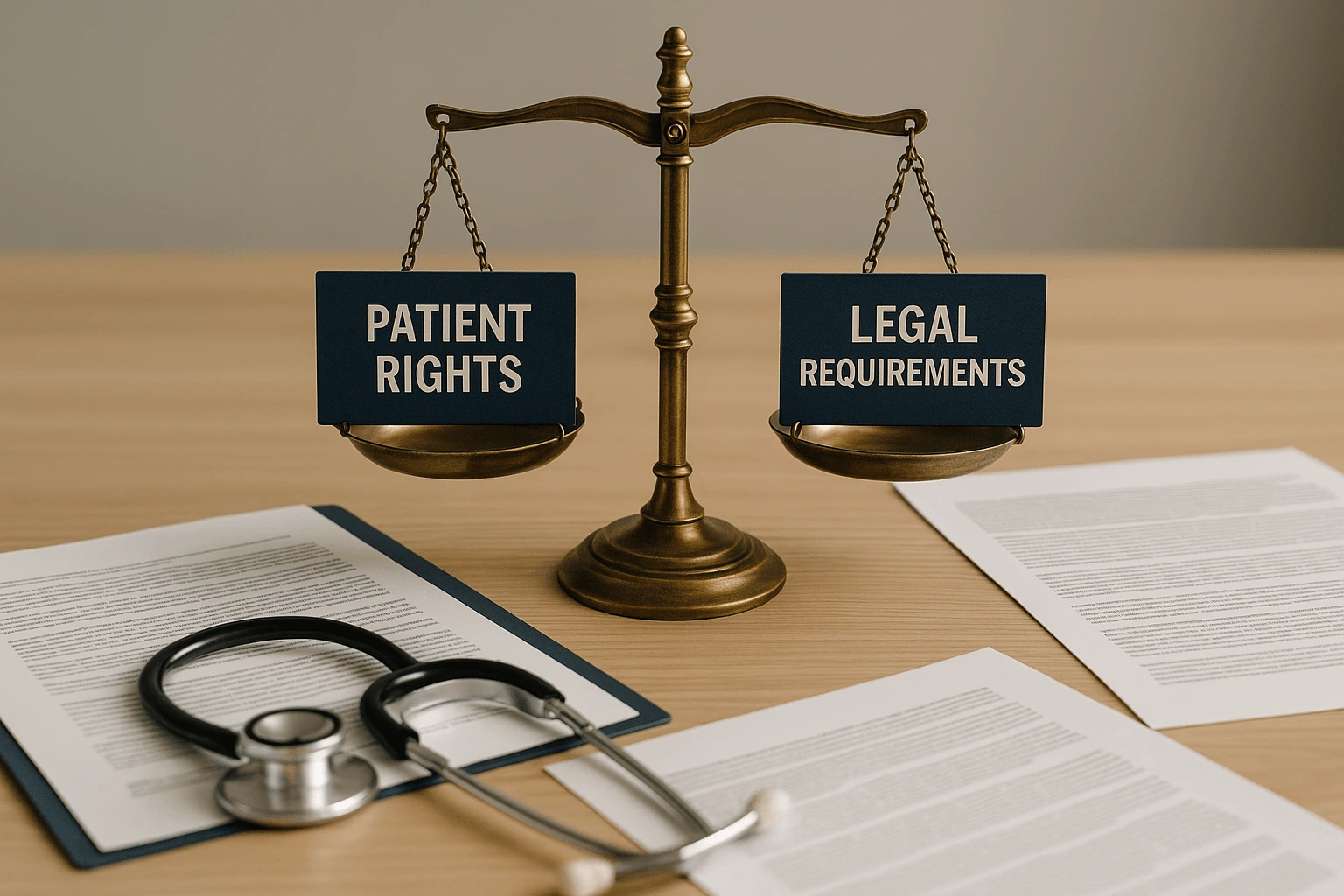Missouri operates under a dual constitutional-statutory punitive damage system that establishes separate enforcement provisions for common law and statutory causes of action.
This article reviews Missouri's punitive damage framework, current statutory limits, procedural requirements, recent legislative developments, and controlling court precedents across personal injury and medical malpractice practice areas.
Legal Foundation of Punitive Damage Caps in Missouri
Missouri’s punitive damages framework is primarily governed by Missouri Revised Statutes § 510.265, enacted to create consistent statewide limitations on exemplary awards. The statute restricts punitive damages to the greater of $500,000 or five times the net compensatory award, reflecting legislative intent to balance deterrence with predictability in civil actions.
- Statutory Authority (§ 510.265): Establishes the general cap and allows exceptions when a defendant was convicted of a felony arising from the same conduct or acted with specific intent to cause harm.
- Evidentiary Standard (§ 510.261): Requires plaintiffs to obtain leave of court before pleading punitive damages and to prove the claim by clear and convincing evidence of reckless or intentional misconduct.
- Medical Malpractice Provisions (§ 538.210): Governs noneconomic damage limits in healthcare liability cases, illustrating how punitive and compensatory limits operate within distinct statutory frameworks.
- Constitutional Context (Mo. Const. art. I, § 22(a)): Preserves the right to jury trial, providing the basis for challenges to statutory caps in common-law actions.
- Judicial Interpretation: In Lewellen v. Franklin, the Missouri Supreme Court held that applying § 510.265 to common-law fraud violated the constitutional right to jury trial, while maintaining the statute’s enforceability in statutory causes of action.
These provisions establish Missouri’s hybrid punitive-damages framework—legislative caps balanced by constitutional protection for jury-determined awards in common-law claims.
2025 Punitive Damage Caps in Missouri
As of October 2025, Missouri law limits punitive damages under § 510.265 as follows:
- General Cap Rule: Under § 510.265, the cap applies to actions filed after August 28, 2020, and after Lewellen v. Franklin is mandatorily applied to statutory (not common-law) claims.
- Medical Malpractice Caps: Under § 538.210, noneconomic damage caps in Missouri’s medical-malpractice statute start at $400,000 for non-catastrophic and $700,000 for catastrophic injuries and increase annually by 1.7%.
- Enhanced Medical Standards: Punitive recovery in medical negligence requires clear and convincing evidence that the provider intentionally caused harm or acted with malicious misconduct; ordinary negligence does not qualify.
- Statutory Exceptions: The cap does not apply when the State of Missouri is the plaintiff, when defendants are convicted of felonies arising from the same conduct, or in housing-discrimination claims under the Missouri Human Rights Act.
- Constitutional Limitations: Common-law claims remain uncapped; courts apply federal due-process excessiveness review rather than automatic statutory limits.
Procedural & Evidentiary Requirements for Punitive Damage Caps in Missouri
Missouri law imposes defined procedural and evidentiary requirements that shape how punitive damages are pled, proven, and tried. These rules, outlined primarily in Mo. Rev. Stat. §§ 510.261–510.263, emphasize judicial oversight and heightened proof standards.
Procedural requirements include:
- Leave of court required before pleading punitive damages, with motions filed no later than 120 days before trial and supported by evidence establishing a reasonable basis for relief.
- Asset discovery prohibited until the court grants leave to plead punitive damages (§ 510.263.8).
- Bifurcated trials: liability and compensatory issues are tried first, followed by a separate punitive phase.
- Employer liability limits under Senate Bill 591 apply “complicity” standards restricting vicarious punitive exposure.
Evidentiary requirements include:
- A clear and convincing evidence standard under § 510.261 for all claims.
- In medical negligence, punitive recovery requires intentional or malicious conduct, excluding negligence-based theories.
These procedures ensure fairness and proportionality while preserving constitutional due process, providing the framework for Missouri’s evolving punitive damages jurisprudence.
Recent Developments and Pending Legislation in Missouri
Recent legislative and judicial activity has refined the application of Missouri’s punitive-damage caps.
- Senate Bill 758 (2025) represents the most significant recent modification, effective August 28, 2025, expanding punitive damage availability against public entities under specific conditions requiring "clear and convincing evidence of safety standard violations." This legislation departs from traditional sovereign immunity protections in limited circumstances.
- House Bill 274 (2023) introduced asbestos-specific damage modifications affecting specialized litigation practices. Updated jury instructions became effective November 5, 2024, through revised MAI-Civil instructions modifying damages presentations that affect punitive damage jury consideration.
Recent appellate activity includes John L. Durnell v. Monsanto Co. (2025), with courts referencing Anderson v. Monsanto Co. (2007). Full punitive-damage implications await publication of the Durnell opinion, and upcoming reforms may further refine Missouri’s framework to address constitutional and procedural dimensions.
Missouri Punitive Damage Case Law: Foundational Precedents
Missouri case law continues to define the constitutional limits and procedural standards governing punitive damages. Collectively, the following rulings define Missouri’s hybrid punitive-damage model: constitutional protection for common-law actions alongside statutory enforcement elsewhere.
Lewellen v. Franklin (2014) Constitutional Authority
In Lewellen v. Franklin, the Missouri Supreme Court unanimously held in 2014 that statutory caps violated Article I, Section 22(a) of the Missouri Constitution for common law claims. The court found that mandatory caps "necessarily change and impair the right of a trial by jury as heretofore enjoyed”.
This decision eliminates statutory caps for common law tort claims while preserving legislative authority over statutorily-created causes of action, fundamentally reshaping Missouri's damage framework.
Frost v. PCRMC Medical Group, Inc. (2024) Standards Application
In Frost v. PCRMC Medical Group, Inc., the Missouri Court of Appeals reversed a $500,000 punitive award in October 2024, holding that evidence failed the required evidentiary standard under current law (illustrative of appellate reasoning; full opinion not yet published). The court emphasized that post-2020 reforms require proof of intentional or malicious misconduct rather than traditional negligence theories, demonstrating the practical impact of legislative changes on punitive damage recovery in medical malpractice cases.
This decision illustrates how enhanced evidentiary standards significantly limit punitive damage availability in healthcare cases.
Practical Application of Missouri’s Punitive Damage Caps
Missouri’s dual constitutional and statutory framework defines how punitive damages are pled, proven, and presented at trial. Leave of court, bifurcated proceedings, and heightened evidentiary thresholds require early motion practice and well-documented factual support. In medical malpractice actions, recovery hinges on intentional or malicious conduct rather than negligence, reshaping case-development strategy.
Financial discovery and net-worth evidence follow liability findings, emphasizing careful sequencing of trial preparation. These standards also influence settlement timing under Missouri’s non-insurability rule for punitive awards.
Comprehensive case preparation, including organized medical documentation and precise evidentiary presentation, remains essential to meeting Missouri’s heightened burden of proof. Streamlined medical record retrieval and chronology organization through platforms such as Tavrn strengthens evidentiary readiness and improves litigation efficiency.





















.webp)
.webp)




















































